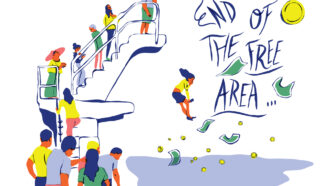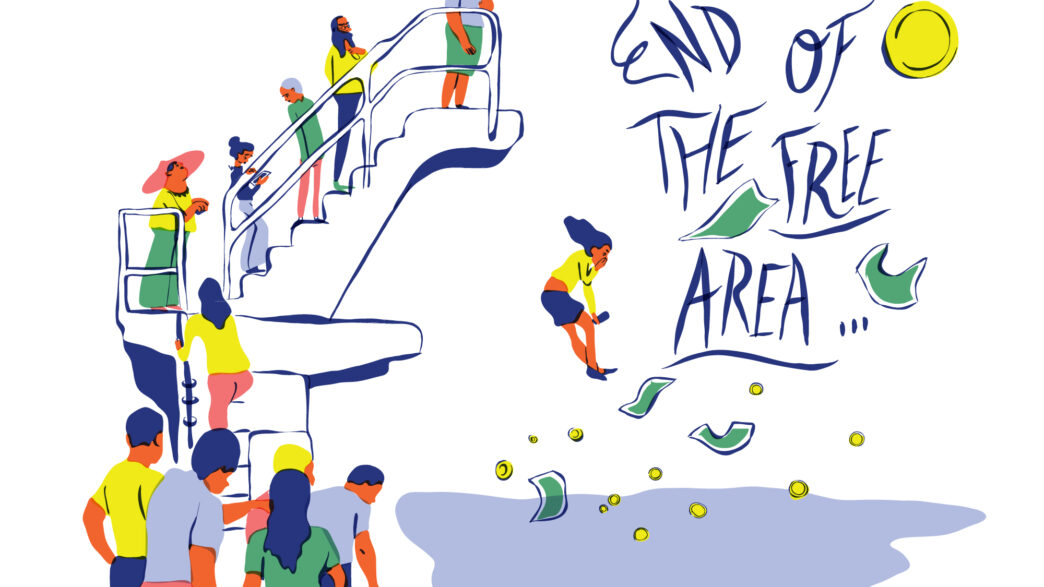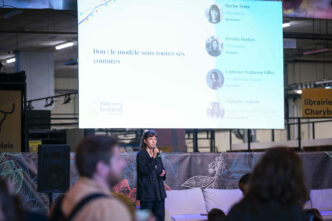

Price, access to free content, commitment and technical issues were the 4 qualitative reasons why people don’t pay for news according to a recent study by Groot Kormelink, professor in Journalism Studies at Vrije Universiteit Amsterdam.
Importantly, all participants had at least some interest in receiving a news subscription, with the goal of the study being to report on these users’ underlying reasons for not paying for news as situated in an everyday context, “helping news media more specifically target and develop subscription strategies towards potential subscribers rather than people who wouldn’t consider subscribing to news in the first place”.
Price
Unsurprisingly, price was a key reason raised by study participants as to why they wouldn’t pay for news. Not only was there repeated mentions of limited budgets, which is only going to increase in importance with the rising cost-of-living, but also the idea of subscription saturation as publishers of various types of content fight for their place in consumer monthly spending. Particularly for younger audiences, who also have less disposable income, music and VOD subscriptions have dominated their budget, not leaving a great deal of room for news.
Perhaps a lesson can be learnt from these audio and video subscription services to solve the price challenge for news publishers. Specifically, both Spotify and Netflix (the biggest music and video streaming services respectively) offer family subscriptions, with each member having their personalized account space. Is there room for news to do this too, thus making news more accessible?
Another point raised was that most participants were surprised at the low price-point, assuming it would be higher. This implies that publishers should increase the visibility of their low-cost offers to entice conversion and remove any concern of not being able to afford a subscription.
A sufficient amount of news is already available for free
The ‘culture of free’ mentality is nothing new when it comes to digital content – being able to easily access a wealth of information online considerably lowers the perceived value of such information meaning online news is generally seen as less worth paying for than print.
Not only this, but also the huge variety of this free information renders subscribing to a single medium useless. For many, simply combining the ‘bits and pieces’ from different sources provides a sufficient supply of news.
The solution for this point revolves around the quality of premium content compared to free.
In fact, it’s this (“extraordinary journalism” to be precise) that the CEO of The New York Times highlighted as the central reason for their subscription success, a model that’s based around a 5 word business strategy – Make journalism worth paying for.
However, participants were often not aware of the higher quality of news and added value for subscribers until they actually paid.
This raises a dilemma for publishers – whilst making more of their in-depth content freely available could help showcase their quality, this strategy could simultaneously make it less urgent for users to convert. It’s a balance between enough content discovery/engagement and enough frustration.
Although there are a variety of ways to find this perfect balance, two paywall models stand out:
- A metered approach where readers are offered a quota of articles to access for free, allowing for value discovery. In this instance, unlike freemium models, content isn’t divided into free vs premium. Rather, all your content should be of a high quality to encourage conversion.
- A dynamic model which involves segmenting users and building adapted user journeys. Less engaged users can be offered access to premium content for free to allow for value discovery, making them increasingly more likely to subscribe in the future. Your more engaged users, who are more aware of the high quality of your premium content, can be presented with a tighter paywall to convert them into a subscriber.
Insight on the wording of your subscription offer from Kim et al. (2021b):
Subscription appeals using loss-framed messages (“Don’t lose touch with the news from…”) generated fewer clicks than those with gain-framed messages (“stay in touch with news from…”).
This implies that subscription decisions are motivated by feeling relatively certain about gaining something from converting. This of course makes sense, but it should inform your strategy when forefronting the advantages of each offer. For instance, Poool clients have proven the value of placing the subscription offers on the paywall itself – in EBRA’s case, this strategy was tested on a single brand and, after this wall led to an increase in click-through rates by 97% and conversion rates by 37%, they rolled it out across their group of publications.
Commitment
In the study, commitment came up in 3 forms:
1. Commitment to just a single publisher
Of course, subscribing to multiple news publications isn’t an option for most, but the idea of even subscribing to a single medium raises the question of whether you’re forgoing relevant news from other media. Study participants referred here to the desire to ‘snack’ from a variety of different sources rather than having to commit to a single media.
Unfortunately for small, independent publishers, larger medias such as The New York Times are gradually widening their ‘umbrella’ of value offered, providing subscribers with news, sports, games, etc under a single subscription, partly solving this issue.
Another option, however, could be for smaller publishers to group together under a collective, providing shared subscriptions or simply offering limited free content to readers who are subscribed to a ‘partner’ media.
2. Financial commitment
This refers to tying yourself financially to a news medium for a long period of time or, as one participant brought up, being stuck with a difficult-to-cancel subscription.
The takeaway for publishers here is fairly simple – reassure readers that there’s no commitment, that they can cancel anytime and that this unsubscription process is simple to complete. Although this may seem counter-intuitive (i.e. helping a user to unsubscribe) it can in fact increase conversions as well as support the building of a trusting, long-term relationship between you and your reader.
3. Commitment to maximizing the value of this subscription
An ‘obligation’ to consume content regularly could put people off subscribing.
My immediate thought here was that the readers in this study aren’t engaged enough to naturally want to come back and consume content on a regular basis – they haven’t yet formed a habit with the publisher.
Which brings up another point mentioned in the study, namely that participants pointed to the fact that a print paper physically reminded them to take the time to sit and read the news. It almost forced a commitment and habit formation as reading meant an ‘object completed’ as opposed to a continuous digital service.
The question then turns to how we can bring these habits and sensations into the digital age…
- Newsletters, sent regularly to form a habit and provide an ‘object completed’ sensation when a user finishes reading
- Daily releases at the same time – such as content series, games
- Limit releases, or try to find a limit to avoid the feeling of a continuous, limitless amount of content to consume (personalized content recommendations is a valuable strategy here)
Overall, paying for subscription was imagined as a commitment device in both a positive and negative sense: spending money would force users to read the news, and only on one site, but the fact that they were paying for access would also help guarantee that they actually do read it.
This suggests an ambiguous relationship with news – readers want to (or feel like they should) consume the news, yet have a hard time getting themselves to do so.
2 takeaways can be taken from this for publishers:
Engagement is (yet again) incredibly valuable for subscription success. By forming a content consumption habit you ensure readers come back again and again without even thinking twice.
When defining the persona for your subscription product, consider what type of content they’re actually likely to read regularly. For instance, a busy working mum won’t have time for long in-depth articles, however high their quality may be. Instead, you could send out a 5-minute daily wrap-up of the news, providing added value in the form of an easily digestible content that fits into the persona’s routine.
In fact, Nieman Lab’s report on why people cancel their news subscription actually found that one common reason was “too much to read, too little time” and “information overload”. This is definitely something to bear in mind from the beginning of a subscription products development.
Technical issues
Although not a hugely relevant part of the study (as the focus was on print over digital), it’s worth mentioning that one participant had technical issues with their online account. Specifically, they were still faced with the paywall on each visit and had to re-login in order to unlock the content.
User experience shouldn’t be underestimated – it plays an important role in subscriber satisfaction and churn rates, which both directly impact revenues.
You can find Groot Kormelink’s full study here.












